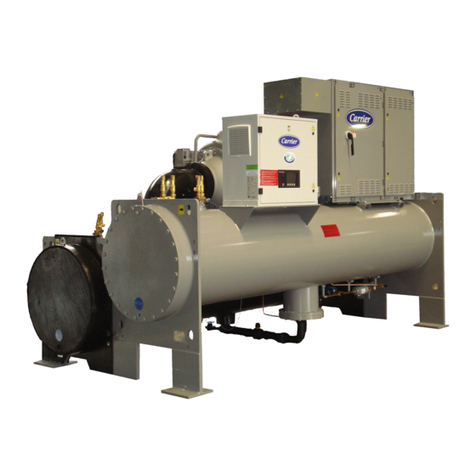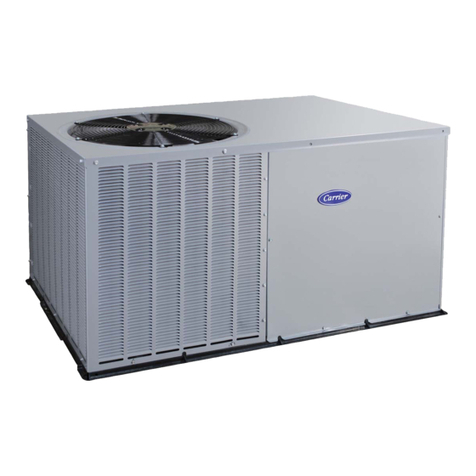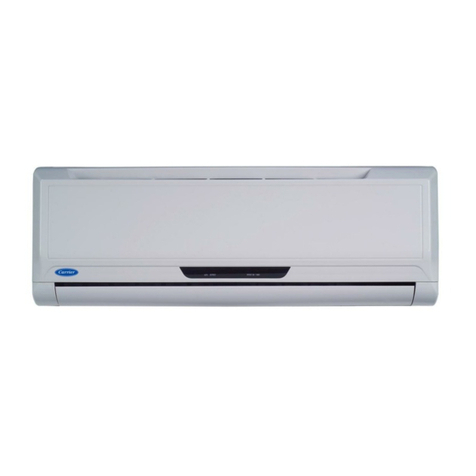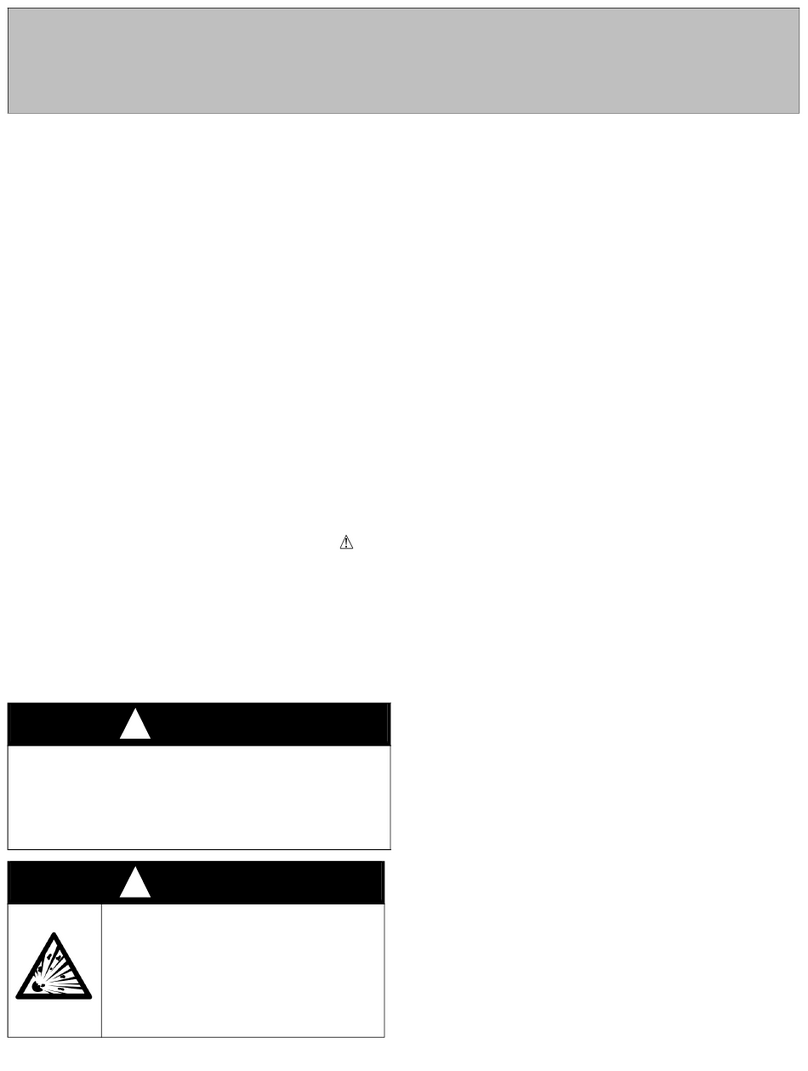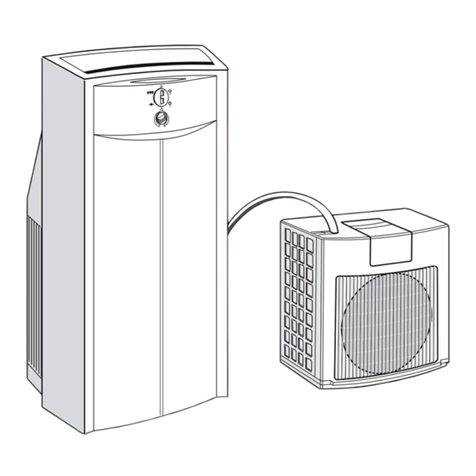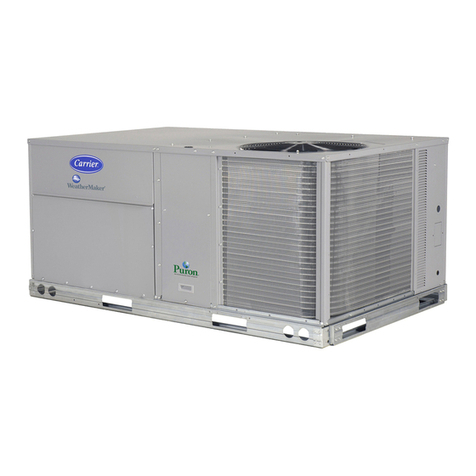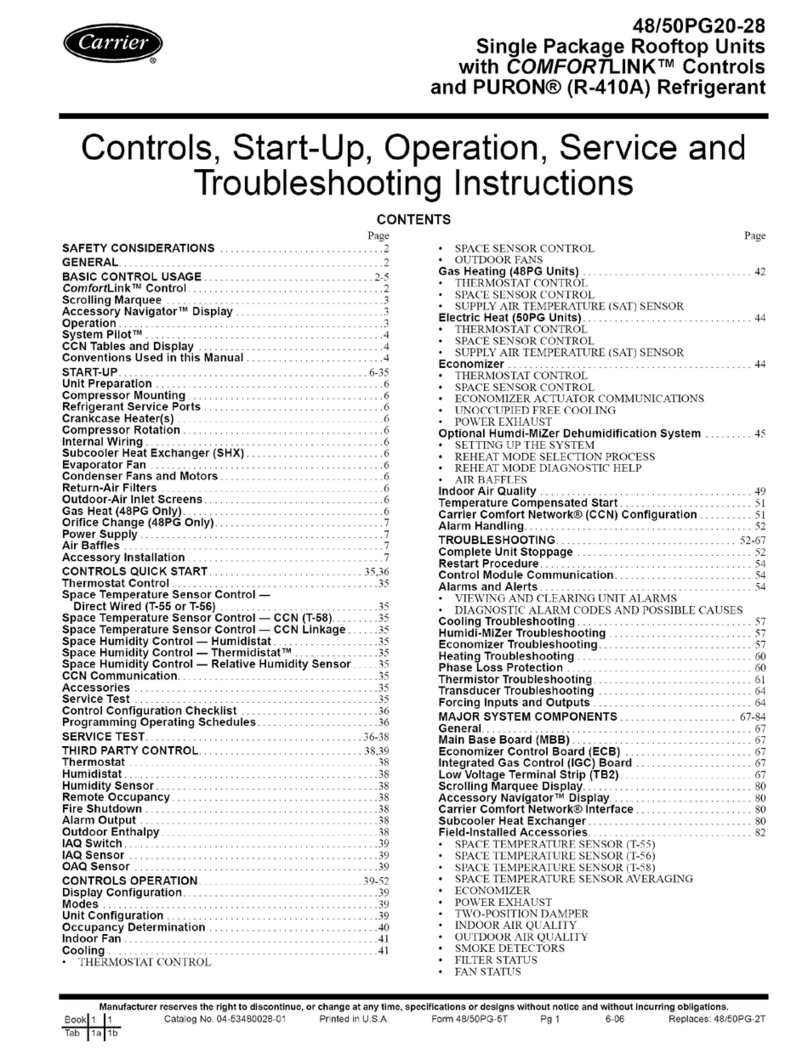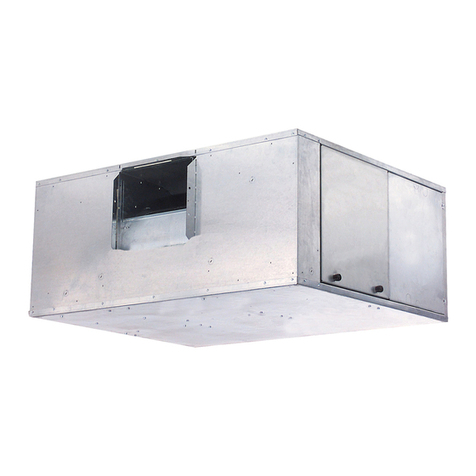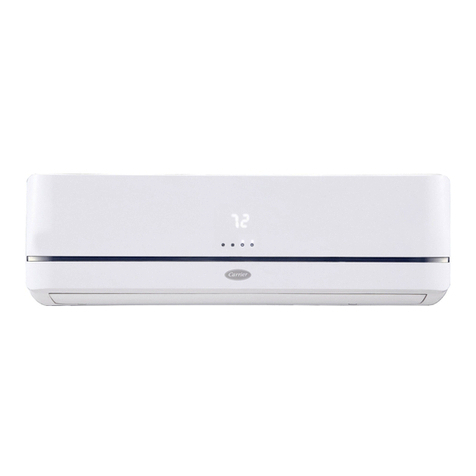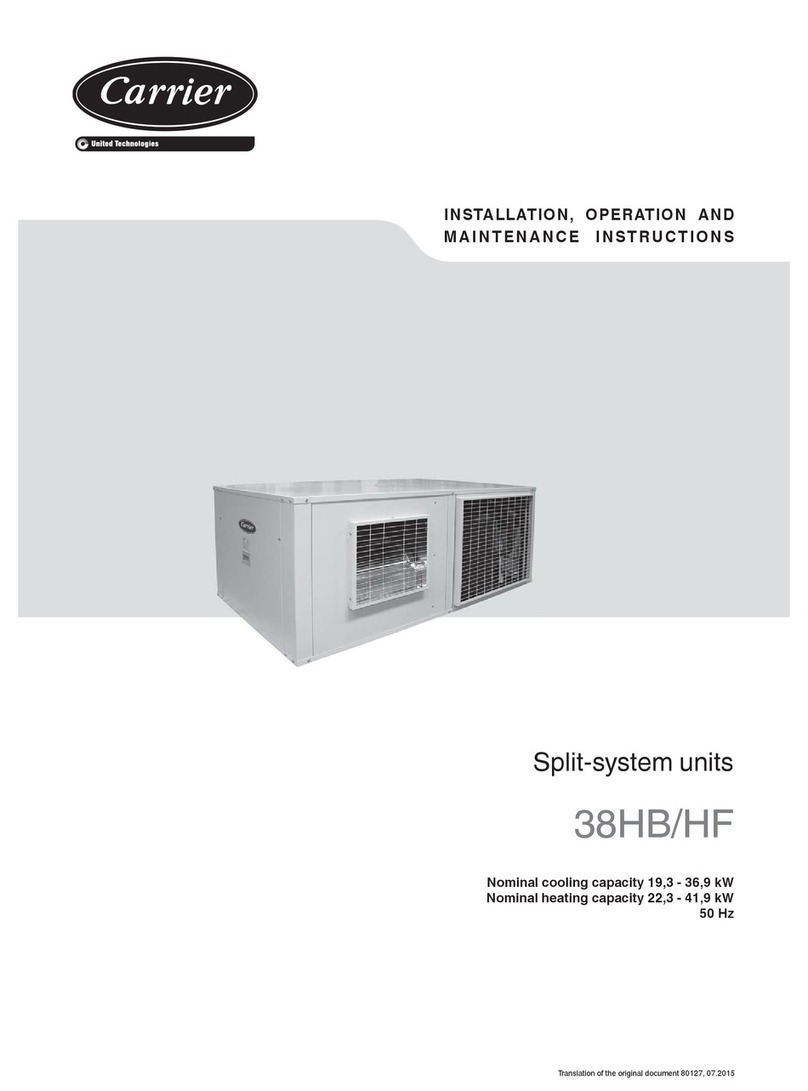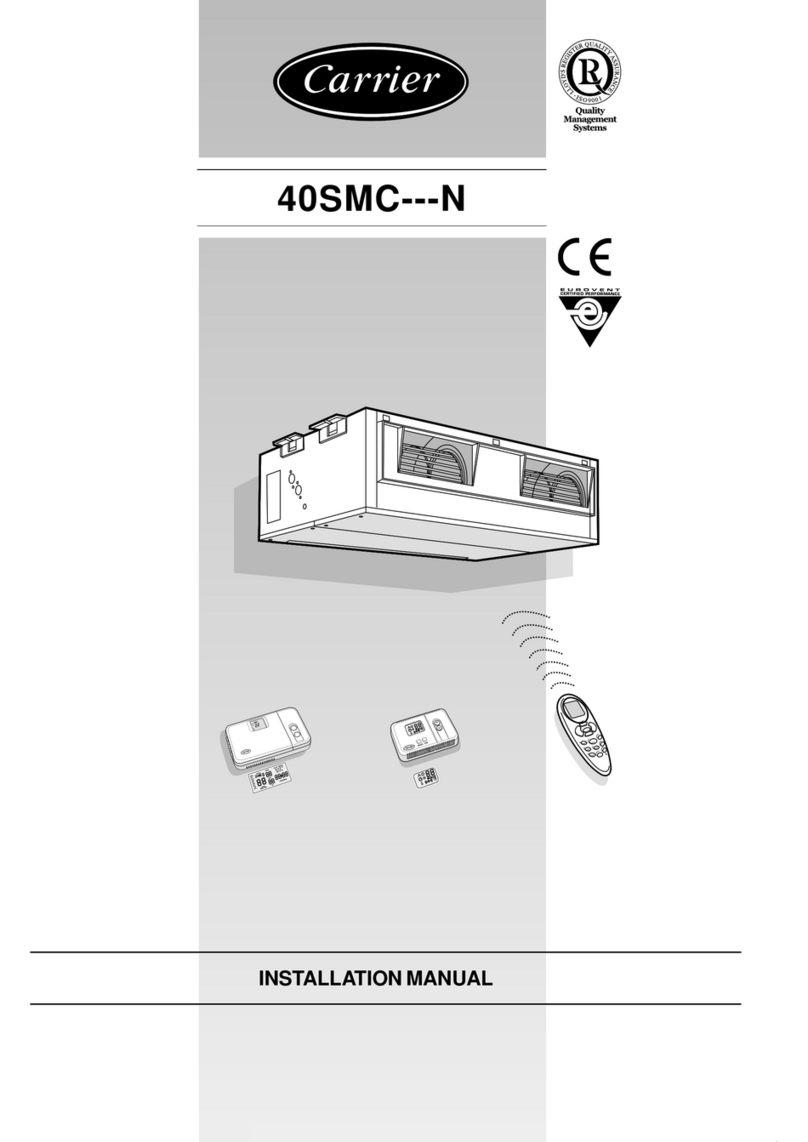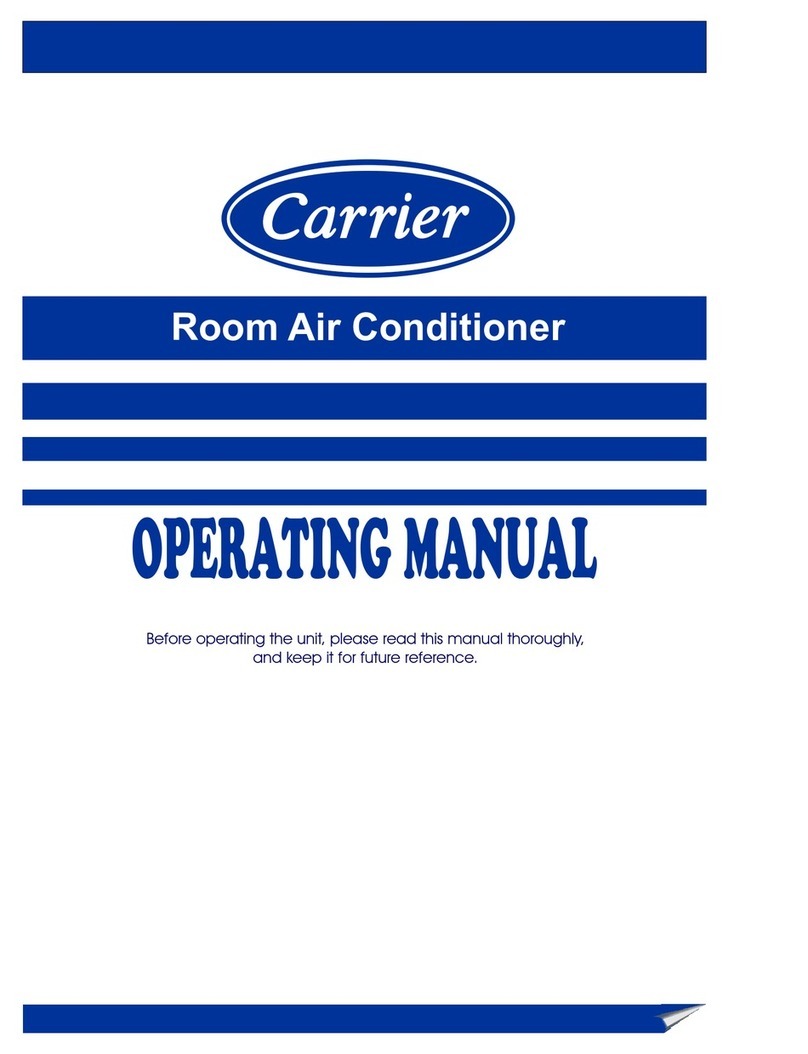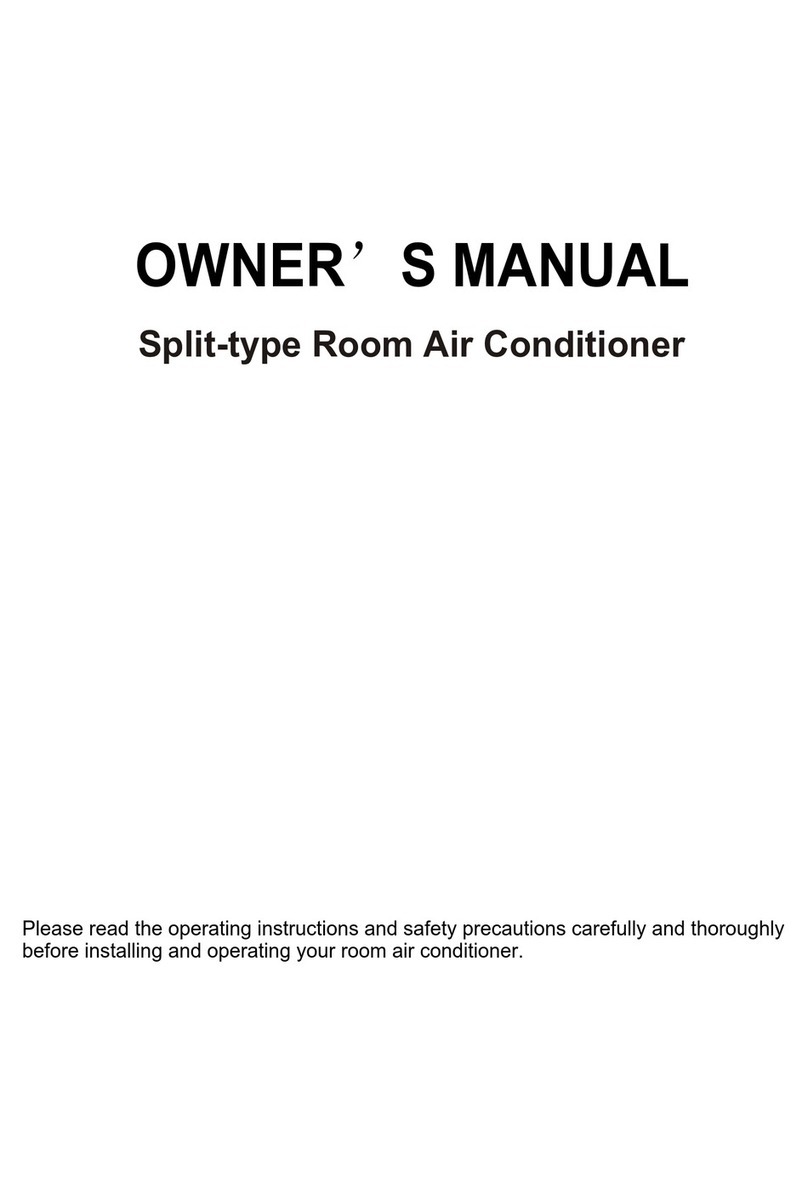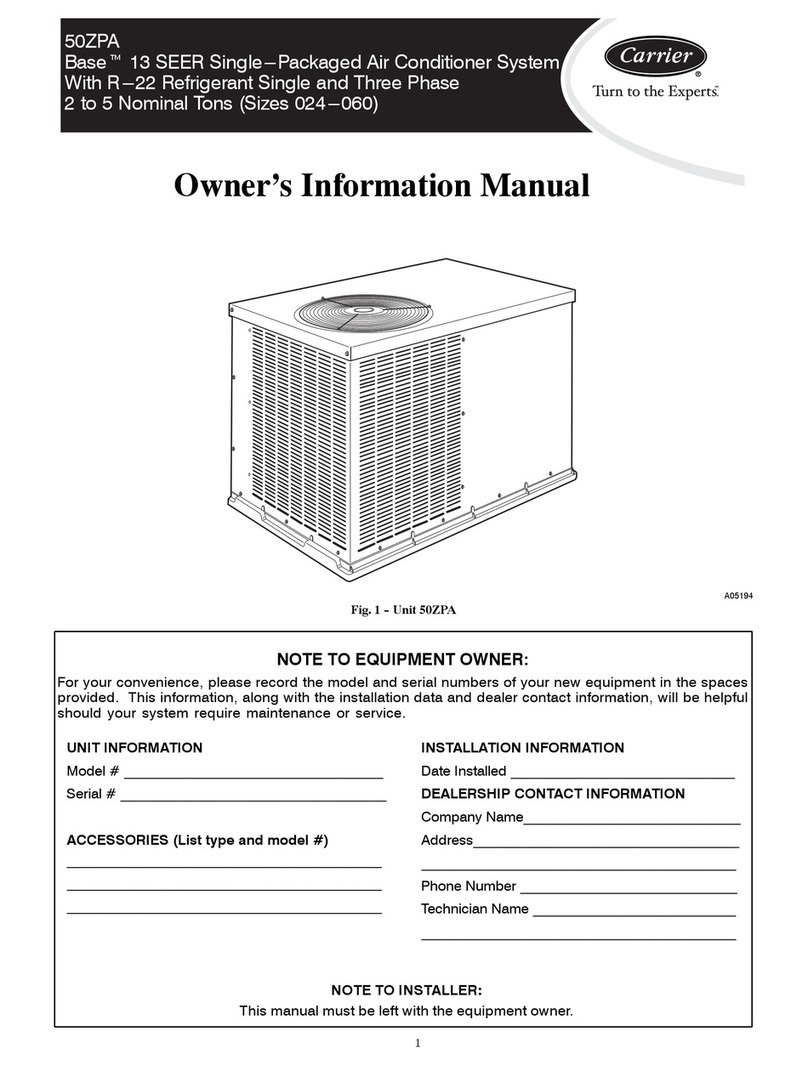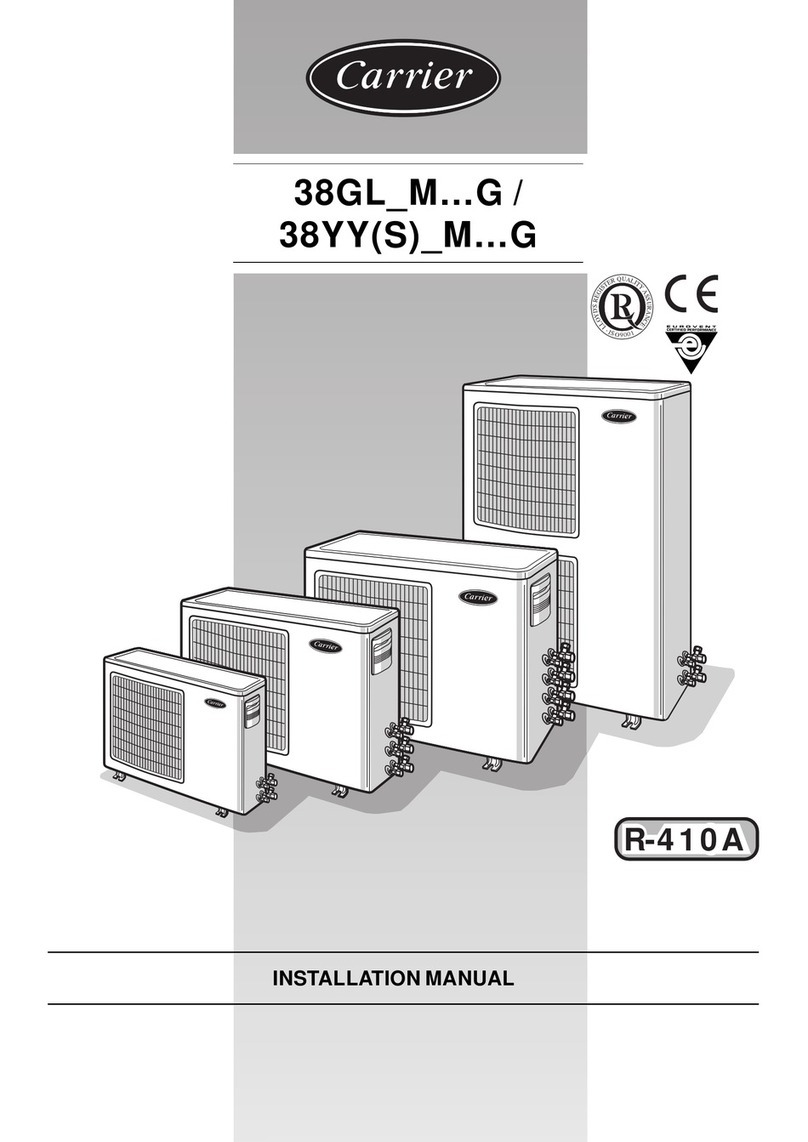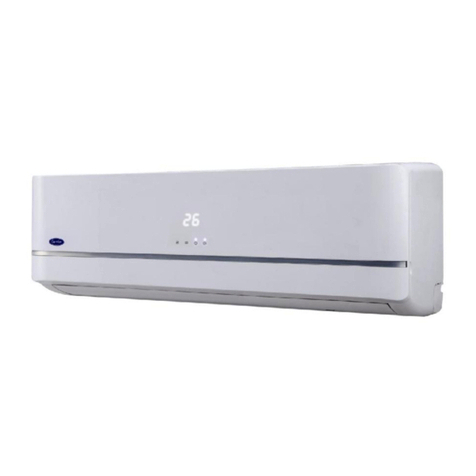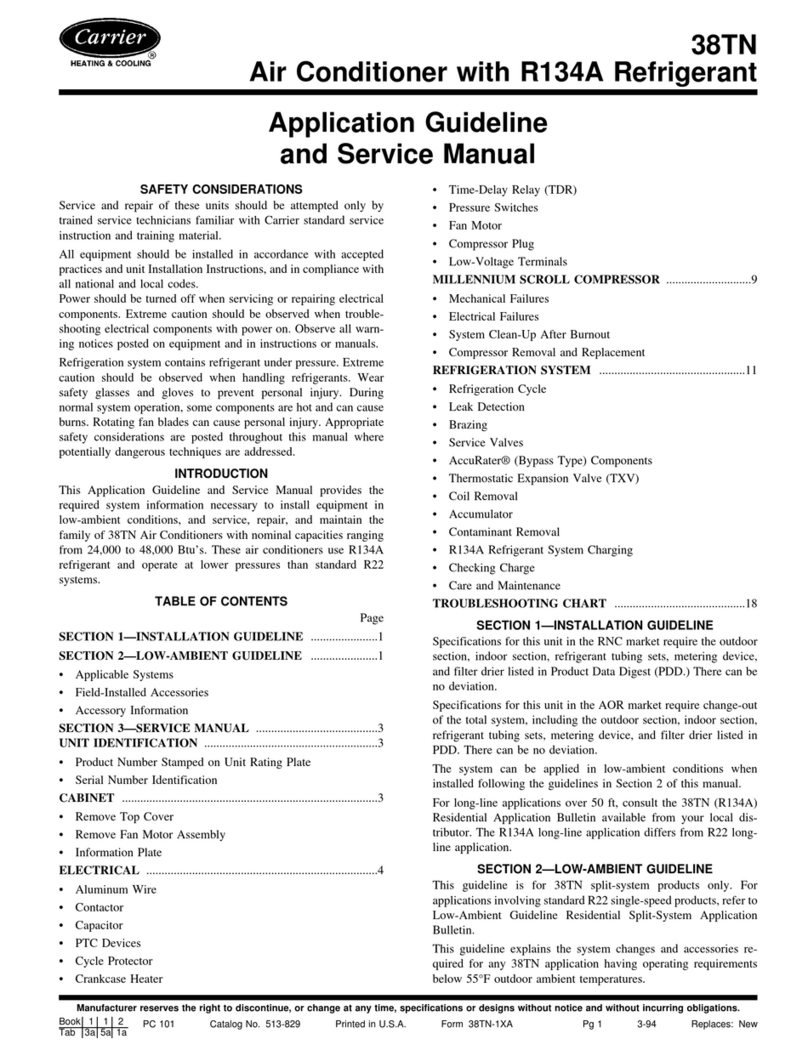
Table 1 — Model Number Nomenclature
Check clearances around scroll and housing before in-
stalling fans. Before securing fan(s) fasteners, rotate fan by
hand to ensure ample clearance.
Refer to Carrier Standard Service Techniques, Chapters 1
and 2, for information on checking motors; removing
refrigerant; adding oil; and evacuating, dehydrating, and charg-
ing system. Pay particular attention to all safety warnings
for these procedures.
NOTE: In Carrier Standard Service Techniques, refrigerant
removal must always include recovering the refrigerant, not
allowing it to escape to the atmosphere.
Compressor Replacement
Stand clear of compressor terminals when working on
compressors. With system under pressure, terminals may
blow causing personal injury.
Observe the same safety procedures for rotary compres-
sors as for reciprocating compressors.
When changing compressors:
1. Follow all safety codes. Reminder: use protective goggles,
work gloves, and water-soaked quenching cloth.
2. Shut off all electrical power to unit by removing power
cord from outlet, then disconnect all wiring from the
compressor.
3. Apply field-supplied tap-a-lines to the true (closest to
compressor) suction and discharge connections of the
compressor.
4. Recover the refrigerant charge from the unit. After re-
covering, cut the discharge and suction line process tubes
below the tube crimps. If you choose a good tubing
location for cutting the refrigerant lines initially, the lo-
cation is easily accessible when making the final joints.
You can braze the oil piping stub into the new compres-
sor fittings more easily before the compressor is put back
into the unit.
Oil vapor in piping stubs can ignite from torch flame
and cause serious injury. Exercise extreme care when
brazing, and keep brazing cloth and fire extin-
guisher handy for emergency use.
5. Connect a nitrogen supply to the unit at one of the tap-
a-line connectors (5 psig maximum flow), leaving the
other connector open to the atmosphere. Braze angle valves
with stubs to each process tube.
6. Remove compressor from unit. Refer toAccessing Com-
pressor, Fan Motor, Outdoor Coil Sections, page 7.
7. Remove tap-a-lines from suction and discharge lines. Care-
fully braze the holes closed from where the tap-a-lines
were removed.
8. For proper cleaning and flushing, use the Carrier
Totalclaimtrecovery system or a comparable refriger-
ant recycling system.
9. Install new compressor and braze into place with field-
supplied copper slip couplings.
10. Connect wiring: replace wire terminals if necessary.
11. Proceed with evacuation and charging. Pinch off lines
where angle valves were added. Cut off angle valves above
pinch-off, and braze tubes.
12. Start up unit.
PREVENTIVE MAINTENANCE
General
CLEANING — Clean cooling coil and condenser (outdoor)
coil. Hold flashlight behind coil to see if all spaces are clear.
Use a hooked wire to remove dirt. Dust accumulation ob-
structs or reduces airflow and results in loss of capacity. Coils
may be vacuumed when dry. Outdoors, unit can be brushed
with a stiff brush and fins blown out with compressed air.
Thoroughly clean basepan, motors, fan wheels, other com-
ponents, and all drain passages. Vacuum insulation. Clean
all inside painted surfaces with mild detergent to remove grease.
Clean cabinet and grille. Mild detergents reduce electro-
static charges on plastic sections of the grille and are good
cleaners. Do not use carbon tetrachloride, solvents, or waxes
containing solvents to clean plastic sections.
PAINTING — Paint any parts that show evidence of rust
with a good rust-resistant paint.
WIRING — Check all wiring for deterioration and all elec-
trical contacts for tightness and lack of corrosion.
MOUNTING — Make sure unit is secure in window, and
level from left to right and from front to rear according to
installation instructions provided.
Check fans to ensure they are correctly positioned, cen-
tered in orifice, and tight on shaft.
2

